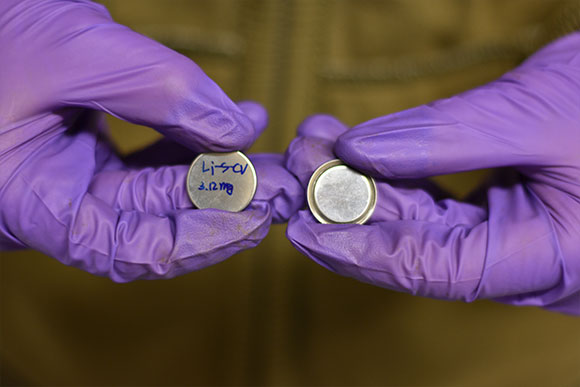
Lithium-ion batteries power some of the most used electronics, including smartphones, laptops, tablets and electric cars. Researchers at the University of North Texas College of Engineering have developed a higher-power, longer-life, environmentally-friendly lithium-sulfur alternative that could replace the lithium-ion battery. Their research has been published in the Nature Nanotechnology journal.
“The lithium-ion battery has limited capacity,” said Wonbong Choi, professor of materials science and engineering and mechanical and energy engineering. “For example, when you charge a cellphone, you get maybe one day of use. We need higher efficiency – maybe where one charge lasts a week. The lithium-sulfur battery has five times, or more, of the charge and discharge capacity of the lithium-ion battery and hopefully will eventually replace it.”
Choi collaborated with three of his doctoral students – Juhong Park, Mumukshu D. Patel and Eunho Cha – as well as Vish Prasad from UNT mechanical and energy engineering and two other local scientists – to create the battery. The researchers have applied for a patent through UNT and are working towards potential prototyping and production.
“If the lithium-sulfur battery is produced commercially, it will be safer and cost less than the lithium-ion, have higher power density and be environmentally friendly. It can also be manufactured at a large scale. The Li-S battery has been studied by many researchers, but no commercial products have been produced because of several critical problems. We have resolved those issues,” Choi said. “We want to use lithium metal on one electrode and sulfur on the other electrode, but lithium metal is too reactive and sulfur is an insulating material. We are using technology in our lab that produces a three-dimensional sulfur carbon nanotube composite material to add conductivity and a nanomaterial coating on lithium metal for a stable electrode that can be commercially produced.”
In their research, they discovered that the element molybdenum, when combined with two atoms of sulfur, creates a 2-D material called MoS2 that allows them to control the thickness of the coating, which is 10,000 times thinner than a strand of hair, and create the necessary performance of lithium metal. They also have proven that the battery’s stability allows for more than 1,000 cycles with much higher energy density than lithium-ion, which is a Department of Energy requirement prior to commercial production.
“Thanks to the discovery and research into MoS2, this conceptual technology of building next-generation batteries can become a reality in the next five years or so,” Cha said. “We demonstrated a very stable, long-lasting battery. We basically created a battery that uses an invisible coating to do major things.”
The researchers say this discovery could change the future of battery-operated devices.
“This will bring a major breakthrough in the lithium-based battery for next generation applications and can have a huge impact on the development of electric vehicles and high power electronics,” Prasad said.